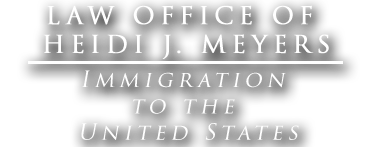United States Immigration and Visa Information
Categories of Immigrants
Immigrants to the United States are divided into two categories:
- Those who can obtain legal permanent resident status without numerical limits.
- Those restricted by annual limits on the number of people who can enter as permanent residents.
The latter category is divided into:
- (A) Family-sponsored immigrants,
- (B) Employment-based immigrants, and
- (C) Diversity immigrants.
Categories of Non-Immigrants
A. Foreign Government Officials
- A-1: Ambassador, public minister, career diplomat or consular officer, or immediate family.
- A-2: Other foreign government official or employee, or immediate family.
- A-3: Attendant, servant, or personal employee of A-1 or A-2, or immediate family.
B. Visitor
- B-1: Temporary visitor for business.
- B-2: Temporary visitor for pleasure.
- B-1/B-2: Temporary visitor for business and pleasure.
C. Aliens in Transit
- C-1: Alien in Transit.
- C-2: Alien in Transit to United Nations Headquarters District.
- C-3: Foreign government official, immediate family, attendant, servant or personal employee in transit.
D. Crewmember (Sea or Air)
E. Treaty Trader/Treaty Investor
- E-1: Treaty Trader, spouse or child: An alien coming to the U.S. solely to carry on substantial trade, including trade in services or technology, principally between the U.S. and the foreign state of which the alien is a national.
- E-2: Treaty Investor, spouse or child: An alien coming to the U.S. solely to develop and direct the operations of an enterprise in which the alien is actively in the process of investing a substantial amount of capital.
F. Student
- F-1: Academic Student.
- F-2: Spouse or child of F-1.
G. International Organization Alien
- G-1: Principal Resident Representative of recognized foreign government to an international organization, staff, or immediate family.
- G-2: Other representative of recognized foreign member government to an international organization, or immediate family.
- G-3: Representative of non-organized nonmember foreign government to an international organization, or immediate family.
- G-4: International organization officer or employee, or immediate family.
- G-5: Attendant, servant, or personal employee of G-1 through G-4, or immediate family.
H. Temporary Workers
- H-1A: Registered Nurse
- H-1B: Alien in Specialty or Professional Occupation.
- H-2A: Temporary worker performing agricultural services unavailable in the U.S.
- H-2B: Temporary worker performing other services unavailable in the U.S.
- H-3 Trainee: An alien who is coming temporarily to the U.S. as a trainee.
- H-4: Spouse or child of alien classified H-1A, H-1B, H-2A, H-2B or H-3.
I. Information Media Representative, Spouse or Child
J. Exchange Visitor
- J-1: Exchange Visitor
- J-2: Spouse or child of J-1
K. Fiancé(e) of a U.S. citizen
- K-1: Fiancé(e) of a U.S. citizen.
- K-2: Child of fiancé(e) of a U.S. citizen.
L. Multinational Company Transferee
- L-1: Intra-company Transferee (Executive, managerial and specialized knowledge personnel continuing employment with international firm or corporation).
- L-2: Spouse or child of L-1.
M. Vocational Student
- M-1: Vocational or other non-academic student.
- M-2: Spouse or child of M-1.
N. Parent of a Certain Special Immigrants
- N-8: Parent of an alien classified SK-3 (certain unmarried sons or daughters of international organization employees).
- N-9: Child of an N-8 or of an SK-1 (certain retired international organization employees).

